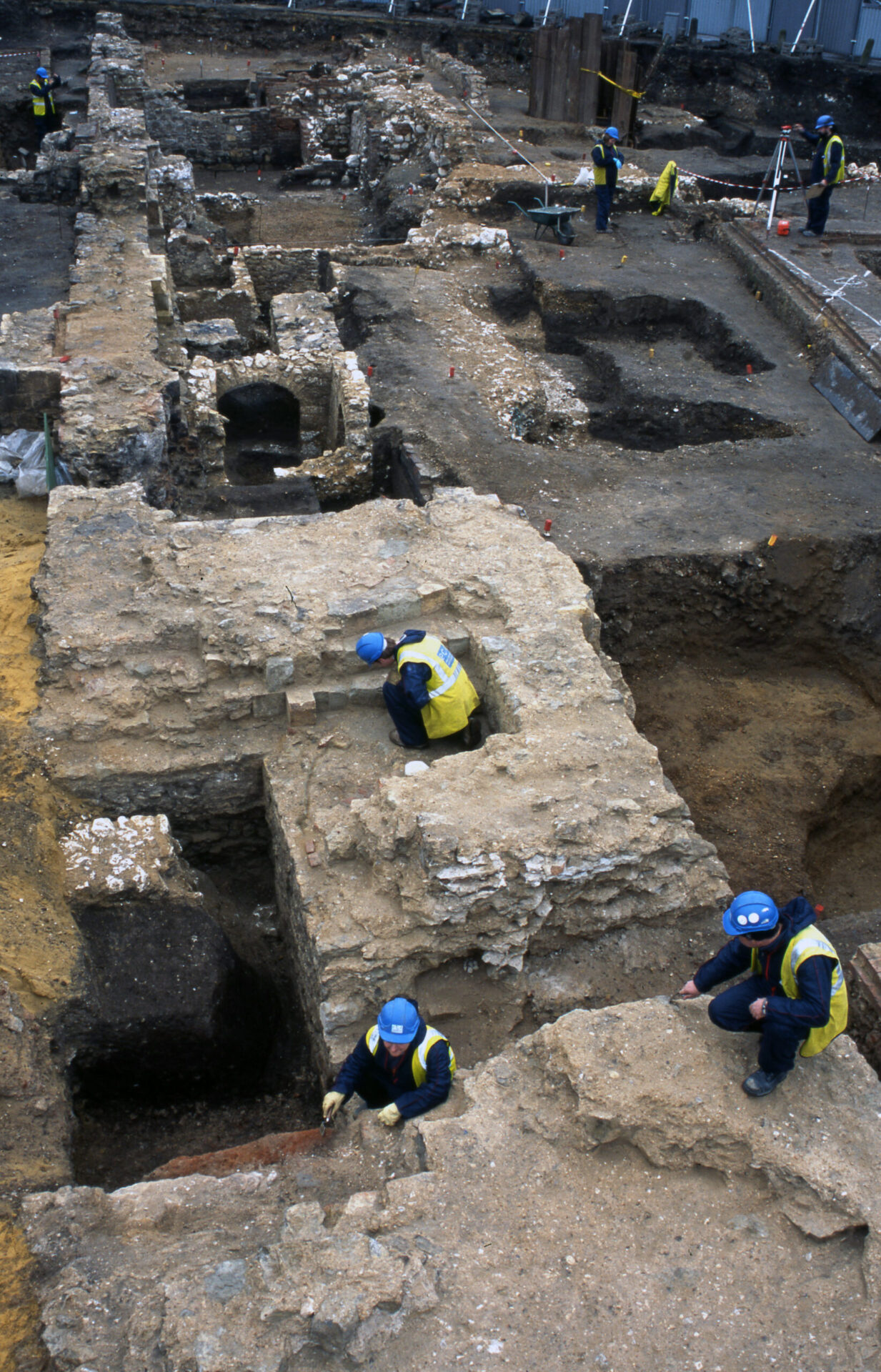The methodology applied to Bermondsey Square encompassed several key steps:
- Foundation designs, based on the best available knowledge of archaeological locations, were developed. These designs, along with an archaeological trench plan and excavation method statement for pile locations, were submitted for approval to English Heritage and the Home Office. To expedite approval, the trench plan and method statement were pre-negotiated with English Heritage and Southwark Council.
- Targeted trenches were fully excavated to clear areas for piling. In cases where inspectors identified archaeology, particularly walls, that they wished to preserve, pile positions were adjusted accordingly.
- In certain areas, such as the northeast of the site with large church remains, the inspectors agreed to expand on the Scheduled Ancient Monument approval and allow wider areas to be opened up and investigated to identify suitable pile locations.
- Service installation and landscaping activities were closely monitored, primarily through watching briefs. This provided assurance to all parties that no unauthorized work would damage the archaeology, mitigating potential issues.
The archaeological remains spanned various periods, from prehistoric to Roman, Saxon, Medieval, and late Post-Medieval.
Key factors contributing to the project’s success included:
- The consistent involvement of PCA as the archaeological contractor.
- Maintaining a positive working relationship with archaeological inspectors from English Heritage and Southwark Council.
- A deep understanding among project design and construction teams of the challenges inherent in working on such a site.
- A high degree of flexibility exhibited by all parties involved.


